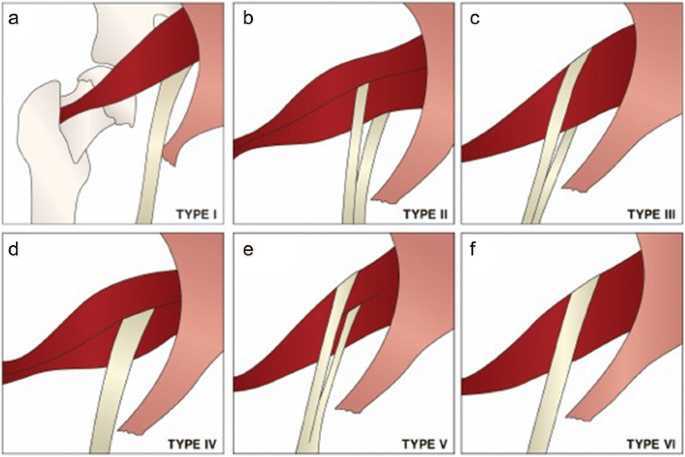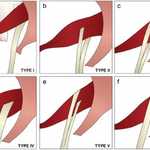Sciatica - What is it and how do I relieve the pain?
Anatomy of the Sciatic Nerve
The sciatic nerve is the largest nerve in the human body and is formed by the union of 5 nerve roots in the low back (L5- S3). It exits the spine and travels down the gluteal region, down the back of the thigh and splits into 2 branches behind the knee (tibial and common fibular nerves). These two nerves then travel down to the leg and foot. At its widest part, it is approximately the same thickness as an adult thumb.
The sciatic nerve innervates the hamstring muscles (the back of the thigh) and the tibial and fibular nerves supply the lower leg and foot.
There are several anatomical variations of the path of the sciatic nerve based on the Beaton and Anson Classification. In the vast majority of the population, the sciatic nerve passes under the piriformis muscle. The next most common pathway is type II, where the sciatic nerve divides and passes through and under the piriformis. Refer to the first image at the top of this artice for representations of each type.
- Type I - the sciatic nerve passes under the piriformis
- Type II - one division of the nerve passes through the piriformis and the other division passes under
- Type III - one division passes above and the other portion passes below the piriformis
- Type IV - the undivided sciatic nerve passes through the piriformis
- Type V - one portion passes above and the other portion passes through the piriformis
- Type VI - the undivided nerve passes above the piriformis
Symptoms of Sciatica
There are several symptoms of sciatica depending on the location of the affected nerve. The symptoms may worsen over time or can come and go. It may be felt as a throbbing, sharp, burning, or a dull pain. It is usually just in one leg but it may alternate between legs. The pain can be felt in the low back, back of the thigh, down the leg, or into the foot. It may also present as weakness or numbness along the path of the nerve.
What causes Sciatica?
Sciatica is defined as pain, numbness, or tingling along the path of the sciatic nerve, especially in the low back and posterior thighs. The nerve may become irritated, compressed, or inflamed by a number of problems in the lower back such as:
- Mechanical compression or direct physical force on the nerve. Some examples include a herniated disc, foraminal stenosis (narrowing of the space through which the spinal roots travel) or instability of the vertebrae.
- Weight gain
- Poor posture
- Prolonged sitting or standing
- Genetics
- Disc degeneration
- Tight piriformis muscle (since the nerve can sometimes pass through this muscle)
How to Treat Sciatica
It is important to find the cause of the sciatica in order to alleviate the symptoms. It can often be treated with stretching and strengthening exercises, massage, chiropractor, acupuncture, and other modalities. In extremely rare cases surgery may be an option. It is important to stay active and seek treatment to prevent further damage to the nerve.
Stretches for a Tight Piriformis - please refer to the second image at the top of this article.
NCBI Research Article
SPINE-health Reference
Image: https://www.pinterest.ca/pin/148829962677167746/









